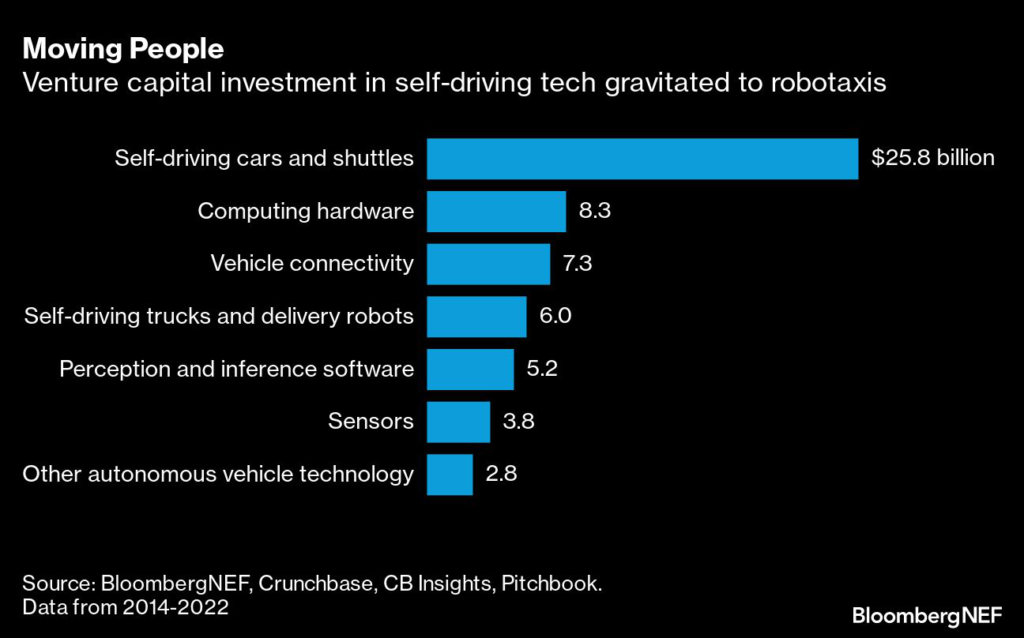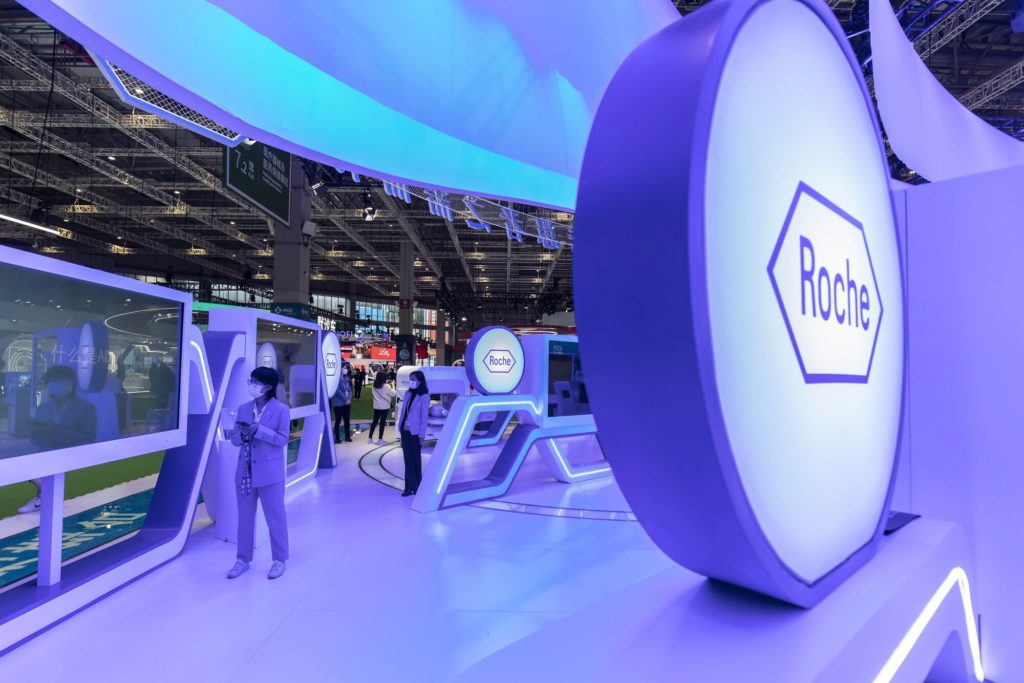Applying automation to heavy-duty trucks will yield more than just safety benefits.
(Bloomberg) — Throughout the last few years of self-driving vehicle development, robotaxis were the most exciting application to pursue.
Almost 60 cents of every dollar invested in the quest for self-driving vehicles went to companies that wanted to be in the business of moving people. Roughly 12 cents went to self-driving truck and delivery-robot companies, with the rest going to supporting technologies and specific parts of the self-driving technology stack.
There are several reasons robotaxis were the most popular choice for investors, but often the rationale boiled down to the the idea that transporting humans in dense urban environments is among the most challenging use cases for self-driving technology. If a company could succeed with robotaxis, then surely they could apply their technology to other modes and business models with relative ease.
Since the widely available fully driverless robotaxi service has been even tougher to develop than anticipated, the industry is now in a phase of application-specific development of self-driving technology, with companies needing to convince investors that their market targeting is precise and that they have both near-term and longer-term routes to generating returns. It also helps if they can make a case that what they are doing will offer all manner of positive benefits for society.
Early this year, I visited the headquarters of Plus, the California-based self-driving truck company with the ultimate aim of developing a fully autonomous vehicle. While that technology is in development, Plus is selling an advanced driver-assistance system called PlusDrive.
David Liu, the startup’s CEO and co-founder, told me the purpose of PlusDrive is to make truck drivers more akin to modern airline pilots by making their job about monitoring how effectively the system is handling driving tasks, with the option for the driver to take over when there are more challenging driving conditions. This can limit driver fatigue and lower the number of road accidents.
Driving a multi-ton vehicle is a complex skill that few can do optimally. What could be most impactful about this technology is how it can improve the efficiency of the driving process. Matching acceleration and braking to best suit the vehicle capability, road conditions and load carried can lead to at least 10% fuel savings, according to Plus’s pilot studies. These fuel savings are particularly valuable when you consider that long-haul trucking is the segment of road transport that is most difficult to decarbonize.
Optimal acceleration and braking also can maximize the driving range of electric trucks, which could make them more feasible for longer routes. This is something Plus will test as it integrates PlusDrive on Nikola Tre electric trucks starting next year.
Plus and other self-driving truck technology companies, including Aurora, TuSimple and newly launched Latitude AI, will need to convince regulators that their technology can be beneficial. Currently, vehicles over 10,000 pounds can’t be tested without a driver behind the wheel in Plus’s home state of California, and there are no coherent regulations on how these vehicles can cross US state lines.
If more efficient supply chains aren’t enough to win regulators over, it should help that Plus and its peers can bolster their argument with additional perks.
More stories like this are available on bloomberg.com
©2023 Bloomberg L.P.










